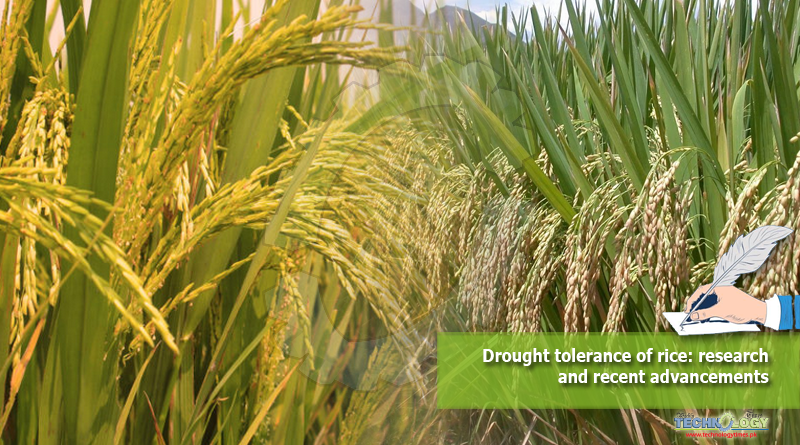The crop of rice is affected by drought tolerance (below-average precipitation) in the areas where water shortage exists. But rice can bear the drought and can tolerate it.

Rice (Oryza sativa) is used as a staple food by billions of people around the world. Probably the oldest domestic grain (~10,000 years. Pakistan is the world’s 11th largest producer of rice. Pakistan’s export makes up 8% of the world’s total rice trade. In the year 2016-17, Pakistan produced 6.7 million tons of rice.
In the last few decades, the researchers have worked on the drought and have given the possible ways of drought tolerance. Drought-tolerant varieties have been introduced by International Rice Research Institute
(IRRI) in several countries and are now being planted by farmers.
Sahbhagi dhan in India, 5411 variety in the Philippine’s, sookha dhan variety by Nepal, BRRI dhan variety by Bangladesh has been introduced. Drought Degree Tolerance (DTD) is a new introduces technique in which the mean of the ratios of green leafs length to the total leaf of top three leaves in every rice seedling is taken after drought treatment.
This is an effective technique but it is avoided in drought tolerance of upland rice at late growth stages. Direct Seeded Rice is a technique in which rice seed is sown and sprouted directly in the field reducing the crop’s water requirement. Improving the photosynthesis in rice by inserting the c4 pathway is the latest drought tolerance technique.
In c3 plants like rice, CO2 is assimilated into a 3-carbon compound by the photosynthetic enzyme ribolose1-5, bisphosphate carboxylase oxygenase (Rubisco). At temperature above 30°C which is typical of rice-growing areas of the world rate of oxygenation increases substantially and this reduces the photosynthetic efficiency of C3 plans by up to 40%.
Thus photosynthesis of rice in the tropics and warm temperate regions becomes inefficient. The C4 plants which have CO2 concentration mechanism within their leaves have very much reduced level of photorespiration. Rice with a photosynthetic mechanism would have increased photosynthetic efficiency while using scarce resources such as land water and fertilizer specifically nitrogen more effectively.
